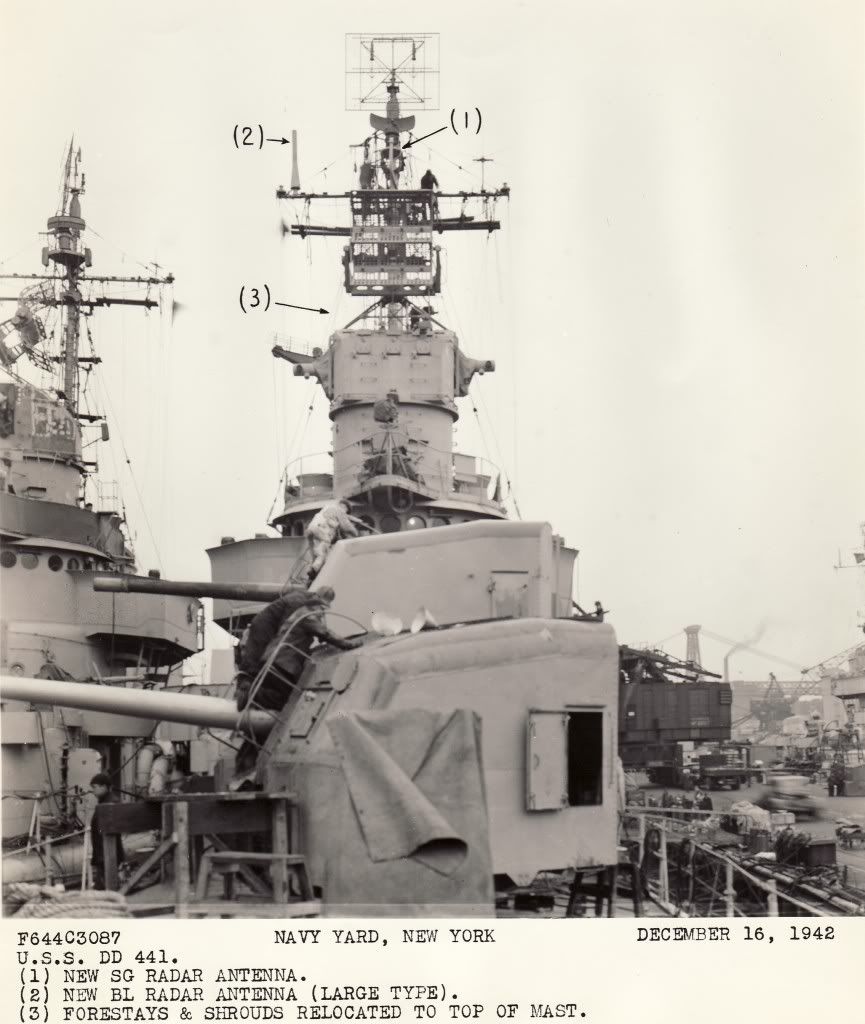The antenna you have pointed out is the "BL Radar Antenna (Large Type)" as pointed out in the photo below. This system was an IFF system (Mk III) interrogator. It was more commonly seen on ships of all sizes in the Pacific, particularly common on FLETCHERS in late 1942 and into 1943. If I remember right, they had problems with the BL system interfering with the search and fire control radars and it was replaced by a better system. As for it being "unsupported" it would actually be quite light in weight and any whipping would not impact its intended operation. I had a hard time finding views of the BL Antenna installed on the early BENSON-GLEAVES units. It appears that they were only mounted for a short time ... starting in late 1942 and were gone by the Fall 1943.
The following description was found at the Naval Heritage and History Command website ...
http://www.history.navy.mil/library/online/radar-13.htm ...
BL and *BM Mark III (A Band) Shipborne IRDESCRIPTION: IFF Mark III (A band) shipborne interrogator-responsor. BM is improved version of BL.
USES: Interrogates Mark III transpondors (ABK, SCR-595, SCR-695, ABF, AN/APX-1, AN/APX-2) and gives an IFF reply on the radar scope.
PERFORMANCE: Reliable maximum ranges: for BL, 90 miles; for BM, 100 miles is expected.
TRANSPORTABILITY: Shipments of both sets include spares. BM has testing equipment as integral part. BL is packed for shipment in 2 units and weighs when crated a total of 375 lbs. BM is packed in 3 packages. Both sets are air transportable.
INSTALLATION: BL has 4 components weighing a total of approximately 274 lbs. The equipment component is 20" x 30" x 203/4" and weighs 250 lbs. BM has 2 components, weighing a total of 585 lbs. The equipment component is 30" x 20" x 203/4" and weighs 275 lbs.
PERSONNEL: Usually no additional personnel required -- the associated radar personnel serving.
POWER: Primary power required is 300 watts for BM, and 400 watts for BL, 110 v AC, 60 cycles. Source is ship's power or supply of associated radar.




